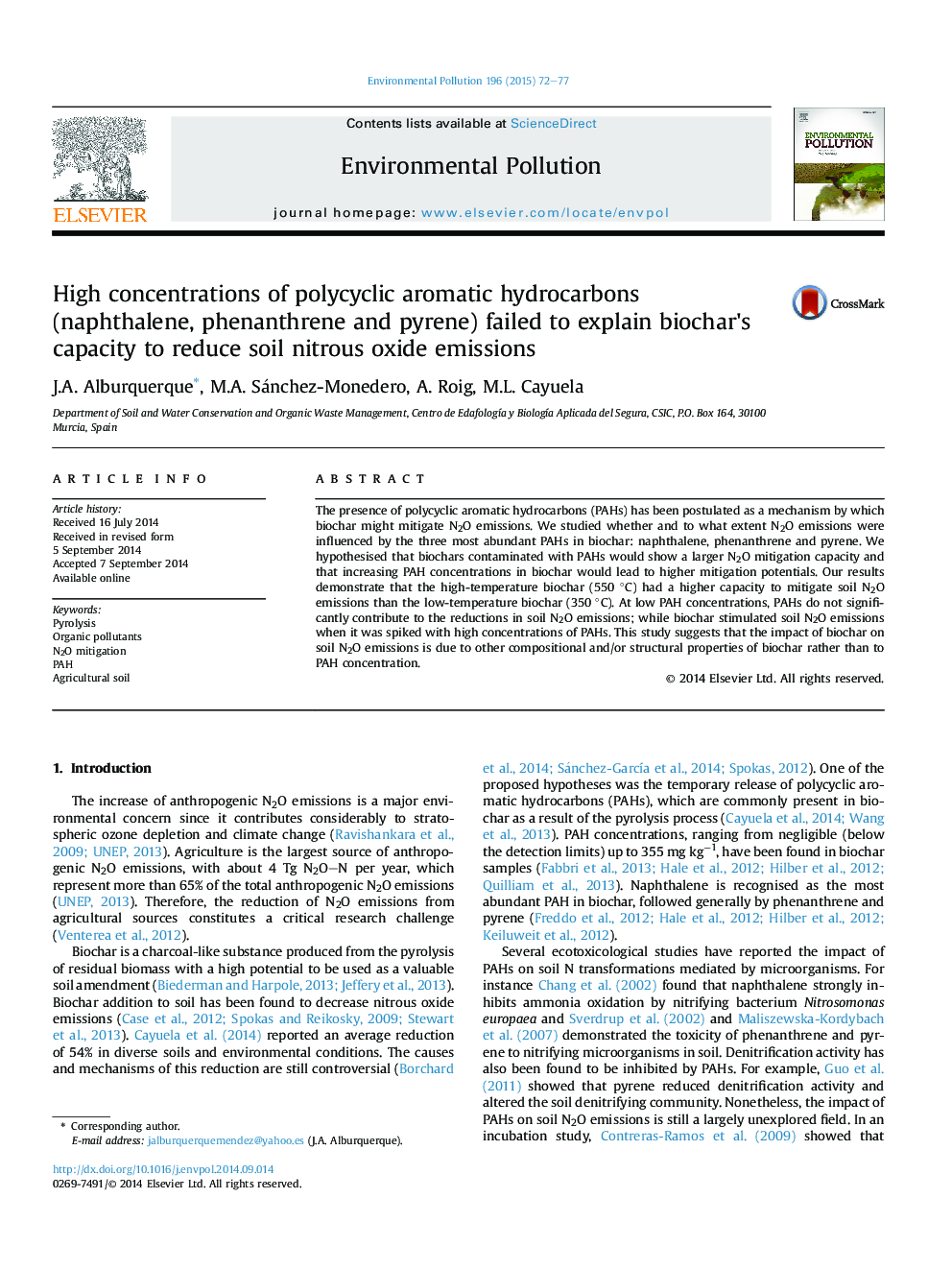| کد مقاله | کد نشریه | سال انتشار | مقاله انگلیسی | نسخه تمام متن |
|---|---|---|---|---|
| 6317881 | 1619176 | 2015 | 6 صفحه PDF | دانلود رایگان |
عنوان انگلیسی مقاله ISI
High concentrations of polycyclic aromatic hydrocarbons (naphthalene, phenanthrene and pyrene) failed to explain biochar's capacity to reduce soil nitrous oxide emissions
ترجمه فارسی عنوان
غلظت های بالا هیدروکربن های آروماتیک چند حلقه ای (نفتالین، فنانترن و پیرنه) قادر به توضیح ظرفیت زیست باری برای کاهش انتشار اکسید نیتروژن خاک
دانلود مقاله + سفارش ترجمه
دانلود مقاله ISI انگلیسی
رایگان برای ایرانیان
کلمات کلیدی
موضوعات مرتبط
علوم زیستی و بیوفناوری
علوم محیط زیست
شیمی زیست محیطی
چکیده انگلیسی
The presence of polycyclic aromatic hydrocarbons (PAHs) has been postulated as a mechanism by which biochar might mitigate N2O emissions. We studied whether and to what extent N2O emissions were influenced by the three most abundant PAHs in biochar: naphthalene, phenanthrene and pyrene. We hypothesised that biochars contaminated with PAHs would show a larger N2O mitigation capacity and that increasing PAH concentrations in biochar would lead to higher mitigation potentials. Our results demonstrate that the high-temperature biochar (550 °C) had a higher capacity to mitigate soil N2O emissions than the low-temperature biochar (350 °C). At low PAH concentrations, PAHs do not significantly contribute to the reductions in soil N2O emissions; while biochar stimulated soil N2O emissions when it was spiked with high concentrations of PAHs. This study suggests that the impact of biochar on soil N2O emissions is due to other compositional and/or structural properties of biochar rather than to PAH concentration.
ناشر
Database: Elsevier - ScienceDirect (ساینس دایرکت)
Journal: Environmental Pollution - Volume 196, January 2015, Pages 72-77
Journal: Environmental Pollution - Volume 196, January 2015, Pages 72-77
نویسندگان
J.A. Alburquerque, M.A. Sánchez-Monedero, A. Roig, M.L. Cayuela,
